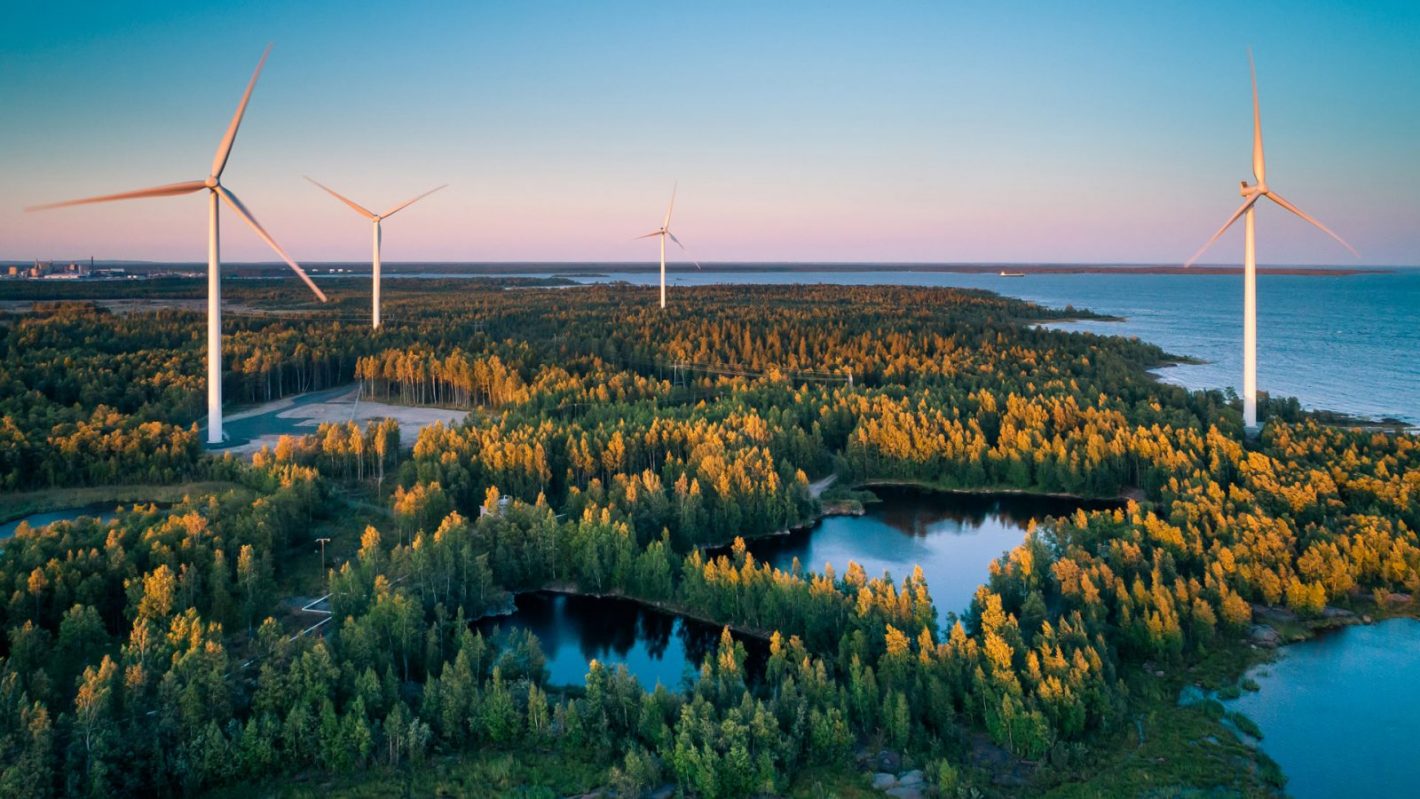The key to sustainable growth lies in the oceans

Blog - Published 1.3.2019


 Often seen as one of the most overstretched resources, the seas offer one of the best avenues for sustainable growth, provided they are utilised wisely. Given that the world consists mainly of water, it is obvious that oceans and seas will also play a crucial role in addressing our global sustainable development goals.
Often seen as one of the most overstretched resources, the seas offer one of the best avenues for sustainable growth, provided they are utilised wisely. Given that the world consists mainly of water, it is obvious that oceans and seas will also play a crucial role in addressing our global sustainable development goals.
Humankind is facing great challenges. Studies show that the rapidly growing population will need 50 per cent more food, 45 per cent more energy and 30 per cent more freshwater by 2030. Diminishing land space and overexploitation of natural resources obviously lead to higher costs and increasing social conflicts. Marine environments face a variety of ever-growing pressures, including those related to climate change, littering, peace and stability.
In order to reach the United Nations’ Sustainable Development Goals (SDGs) until 2030, we must harness the full potential the oceans to provide valuable resources, including more food and energy. At the same time, we must ensure that the oceans retain their capacity to regulate the climate and support biodiversity.
Blue growth is inevitable
The oceans cover more than 70 per cent of the Earth’s surface, but only four percent of our nutrition currently comes from the marine areas. Despite this, the production potential of fish and aquatic plants is several times that of conventional land cultivation and meat production. This also means that the greenhouse gas emissions of aquaculture are significantly lower than in traditional agriculture. For the past two decades, fish farming has been the most rapidly growing form of primary production and it has already surpassed the volume of beef production.
Marine areas have the potential to produce four times more electricity than we use now, and to do so sustainably. Marine renewable electricity production currently represents only around 0.2 per cent of the total global production. To meet the growing need for energy, scientists expect that the prevailing trend will depend strongly on renewable offshore solutions. We can already see significant offshore wind power growth in Europe.
Oceans and seas will be viable solutions to the global water crises. So far, the main challenge in utilising these resources has been the energy costs and carbon footprint of desalination. Combining marine renewable energy production and desalination would reduce carbon emissions and enable the production and storage of drinking water when there is an oversupply of energy.
Most of the world’s megacities are located on the seashore. Floating buildings may be a solution to the housing shortage and other community planning challenges in these cities. Floating buildings are able to adapt to rising water levels, which may be important in cities that are preparing for the effects of climate change.
The maritime economy is a dynamically growing sector, and it has actually been growing faster than the national economies in several European states. However, the pace of development in coming years may bring surprises. Maritime industrialisation brings great opportunities, but it also comes with ecological risks. There are still huge gaps in our understanding of the impacts of human activities on marine ecosystems and on their resilience and capacity to recover. There are also, for instance, deficiencies in understanding the long-term impacts of waves, sea currents or ice loads on offshore structures. Enhancing marine knowledge requires investments in research and impact monitoring, as well as constant dialogue on aspects related to sustainability.
Blue growth powered by digitalisation
Blue growth is obviously driven by the needs of the market. However, it can be strongly boosted through technologies such as digitalisation, artificial intelligence and robotics, as well as the advancement of telecommunications technology.
At present, the amazingly rapid development of artificial intelligence and robotics is challenging almost all branches of industry. When it comes to blue growth, these developments present substantial opportunities, as work at sea and especially below the surface is often dangerous and costly.
In a few years, nanosatellites and improved connectivity will make it possible for vessels and robots – as well as people at sea – to be constantly connected to the internet. This will quickly enable remote operations, along with new kinds of automated and autonomous solutions. In the future, marine logistics will likely be based on autonomous vessels that connect the marine and terrestrial logistics networks seamlessly.
Drivers for change are also cheaper, and miniaturised sensors enable us to collect enormous amounts of information from marine areas in a very short time. At the same time, artificial intelligence will enable rapid analysis of the big data produced by the sensor networks.
Blue innovations fed by collaboration and a joint vision
Grasping the opportunities of blue growth requires a new mindset in which the sustainable growth of the marine sector is viewed as a single entity. A comprehensive perspective helps researchers perceive shared development needs. It would also motivate companies to invest in the development of blue growth solutions. A joint vision would help us to understand how different sectors could benefit from collaboration.
The current national and international regulatory framework has not been designed with the needs of the modern blue economy in mind. Legislation must safeguard sustainability but also enable and encourage the introduction of new, even disruptive innovations. Modern ocean governance, maritime spatial planning and macro-regional strategies are key tools for reconciling environmental and industrial objectives, as well as for boosting sustainable blue growth at the international level.
Opportunities for sustainable growth lie in the sea. Sustainable management requires better coordination between the conservation and diverse uses of marine resources. Economic activities in the marine environment, such as fishing, offshore wind farms or food production, must be balanced against other uses, such as leisure and recreation or nature conservation. Pathways towards more sustainable management of the marine environment have been identified, but there are still too many vested interests, particularly in the economic sphere. To give an example, Poland has recently been granted a licence for deep-sea mining in the Atlantic Ocean, and scientists are concerned that this could endanger marine life.
Finland is taking a more active role in developing the sustainable use of the seas
The Government of Finland adopted its very first national integrated marine and maritime policy in February 2019. According to the new vision, the country will have a global influence and produce solutions to ensure effective marine production, the sustainable use of marine natural resources and a good status for the marine environment.
Enhancing multidisciplinary collaboration between sectors and strengthening public-private partnerships are key elements in creating favourable preconditions for innovations and growth. One Sea – Autonomous maritime ecosystem is an excellent example of modern public-private partnership that is capable of turning a radical innovation into a reality. One Sea is a high-profile ecosystem with a primary aim of leading the way towards an operational, autonomous maritime ecosystem by 2025. The collaboration platform gathers leading marine experts and is a strategic combination of top-level research, state-of-the-art information technology and business. The work began in 2016, and the aim is to create an environment suitable for autonomous ships by 2025.
We believe that Finland, along with the Baltic Sea region as a whole, has excellent potential to become a global trailblazer in autonomous maritime vessels and their operating systems, but also in many other fields of blue bioeconomy and sustainable blue growth. Maintaining public and political interest in the seas, including justifying investing in them as a resource, will be critical in the future. This requires strong political will and bold, determined actions from the administration to create world-class innovation ecosystems and test environments for blue innovations and modern ocean governance. The newly adopted national maritime policy guidelines form an excellent foundation for future work.
The writers are:
Piia Moilanen works as Product Manager on innovative public procurement at Business Finland. At the moment she also works part-time at the Ministry of Agriculture and Forestry under a staff exchange programme. She learned a great deal about water and marine technology in her previous tasks as Head of the Water Programme and the Arctic Seas Programme of the Finnish Funding Agency for Technology Tekes. Contact: piia.moilanen(a)businessfinland.fi
Timo Halonen, Ministerial Adviser at the Ministry of Agriculture and Forestry, is responsible for the Finnish programme under the European Maritime and Fisheries Fund and the Government’s key project on the blue bioeconomy. He is also tasked with promoting the application of public procurement and the impact investment model to solve challenges in the bioeconomy and circular economy. Contact: timo.halonen(a)mmm.fi
Henni Purtonen is Communications Specialist in the blue bioeconomy focus area at the Ministry of Agriculture and Forestry. She coordinates communication about the Sustainable Development Goals, and communication and promoting work on applying public procurement and the impact investment model to solve the challenges in the bioeconomy. Henni is fascinated by appealing and bold communication that makes the world easier to understand. Contact: henni.purtonen(a)mmm.fi
Read more:
Finland is developing its maritime cluster and the sustainable use of the seas
Growth of marine wind power to boost fish farming
Private capital – solution to global challenges?
Published on March 1, 2019.
